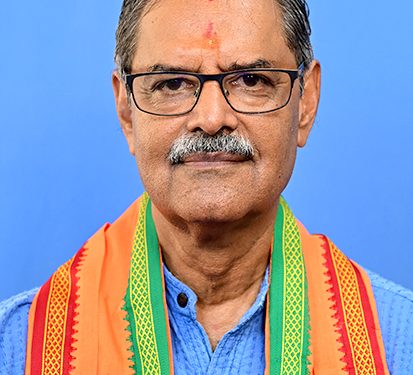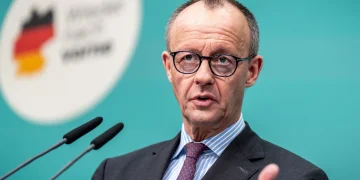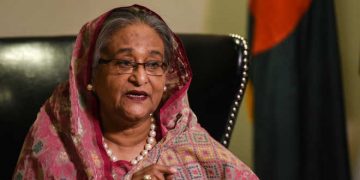By Kanak Vardhan Singh Deo
When our government took office in June 2024, we made a solemn commitment to the people of Odisha: to place energy reform at the heart of our development agenda. Today, as we complete one year in office, I am proud to share how our Energy Department has not only fulfilled this promise but has positioned Odisha as a beacon of sustainable development in eastern India.
From deficit to surplus: A power sector transformation
The transformation of Odisha’s power sector tells a remarkable story of progress. Where we once struggled to meet electricity demands, we now confidently manage a peak load of 6,200 MW, supported by an impressive 12,000 MW of captive generation capacity and 9,000 MW under long-term contracts.
What makes this achievement truly significant is our commitment to clean energy. Today, 43% of our total capacity comes from renewable sources, and we have set an ambitious target to add another 15,000 MW by 2036. This isn’t just about meeting energy needs—it’s about building a sustainable future for our children.
Also Read: Singh Deo represents India at Bhutan meet
Public sector leadership in infrastructure development
Our public sector undertakings have been the backbone of this transformation:
The Odisha Power Generation Corporation (OPGC) currently operates 1,740 MW of thermal capacity and is actively expanding with 1,320 MW of coal-based capacity and 50 MW of solar power in the pipeline.
Meanwhile, the Odisha Hydro Power Corporation (OHPC) manages 2,100 MW of hydroelectric capacity and is pioneering 1,700 MW of pumped storage projects. We have identified nine additional sites with a combined potential of 11,380 MW, demonstrating our foresight in balancing renewable energy with essential storage capabilities.
Green ambitions with global impact
Our clean energy roadmap is nothing short of ambitious. By 2030, we aim to establish 10.96 GW of renewable capacity and produce 6.3 million metric tons per annum of green ammonia—a crucial step toward reducing carbon emissions in industrial and transportation sectors.
The results speak for themselves: since June 2024, our Single Window Committee has approved 1,160 MW of renewable projects, attracting over Rs 95,000 crore in investments. This influx of capital not only strengthens our energy infrastructure but creates thousands of jobs across the state.
Building a resilient grid network
Reliable power delivery remains fundamental to our development strategy. The Odisha Power Transmission Corporation Limited (OPTCL) maintains an exemplary network with 99.9% availability across 16,512 Circuit Kilometres of transmission lines. Strategic upgrades like the 220kV Ring System in Bhubaneswar and Cuttack have significantly enhanced our grid resilience.
Looking toward 2035, OPTCL plans to expand its network to 50,169 MVA and 21,824 CKM, with game-changing projects like the Green Energy Evacuation Corridor and a 765kV high-voltage line already in development.
Distribution excellence and rural empowerment
Our achievements in power distribution have been equally impressive. We have achieved 99% household electrification, serving over 97 lakh consumers across the state. Our Aggregate Technical and Commercial losses have dropped to 17.71%, reflecting significant operational improvements.
The recognition has been overwhelming: three of our DISCOMs earned A+ ratings from the Power Finance Corporation, while NITI Aayog ranked Odisha third nationally for access, affordability, and reliability of power services.
Grassroots green initiatives
Our commitment to sustainability extends to every corner of Odisha:
We have installed over 4.5 lakh solar irrigation pumps, directly benefiting our farming community. Additionally, 485 government buildings have been solarized, along with 561 solar streetlights and 50 solar water kiosks across rural areas.
The PM-Surya Ghar Muft Bijli Yojana has been a particular success, with over 5 lakh rooftop solar systems already benefiting 2.4 lakh homes. Our target is to solarize 3 lakh households by 2026-27.
In our commitment to sustainable transportation, we have inducted 112 electric vehicles into our DISCOM fleet and are replacing 1.1 lakh conventional fans and 2,800 air conditioners in government offices with energy-efficient models.
Also Read: Singh Deo pushes for faster irrigation work
Investment attraction and industry partnerships
At the Utkarsh Odisha Conclave 2025, we demonstrated our appeal to major investors by signing nine MoUs with central PSUs, securing commitments worth Rs 1.24 lakh crore for projects totaling 18,316 MW.
Our co-hosting of the ‘Chintan Shivir’ by the Ministry of New and Renewable Energy and the Solar Investor Conclave in late 2024 drew over 100 solar developers and 150 commercial players, cementing Odisha’s reputation as a preferred destination for clean energy investments.
The path forward: Viksit Odisha, Viksit Bharat
As we look ahead, our energy sector achievements represent more than statistics—they embody our vision of a Viksit Odisha contributing to a Viksit Bharat. Every megawatt of clean energy we generate, every household we electrify, and every green job we create brings us closer to this vision.
Under Chief Minister Sri Mohan Charan Majhi’s leadership, we have proven that a state can simultaneously achieve energy security, economic prosperity, and environmental responsibility. Our success story is being watched and replicated across the nation.
The energy revolution we have initiated in this first year is just the beginning. With clear governance, strategic investments, and unwavering commitment to sustainability, Odisha’s energy sector will continue to light up new possibilities for our state’s bright future.
As we move forward, we remain committed to our founding principle: development that leaves no one behind while preserving our environment for future generations. This is not just our promise to the people of Odisha—it is our contribution to India’s journey toward becoming a global leader in sustainable development.
The author is the Deputy Chief Minister of Odisha in charge of Energy and Agriculture & FE Department.






































